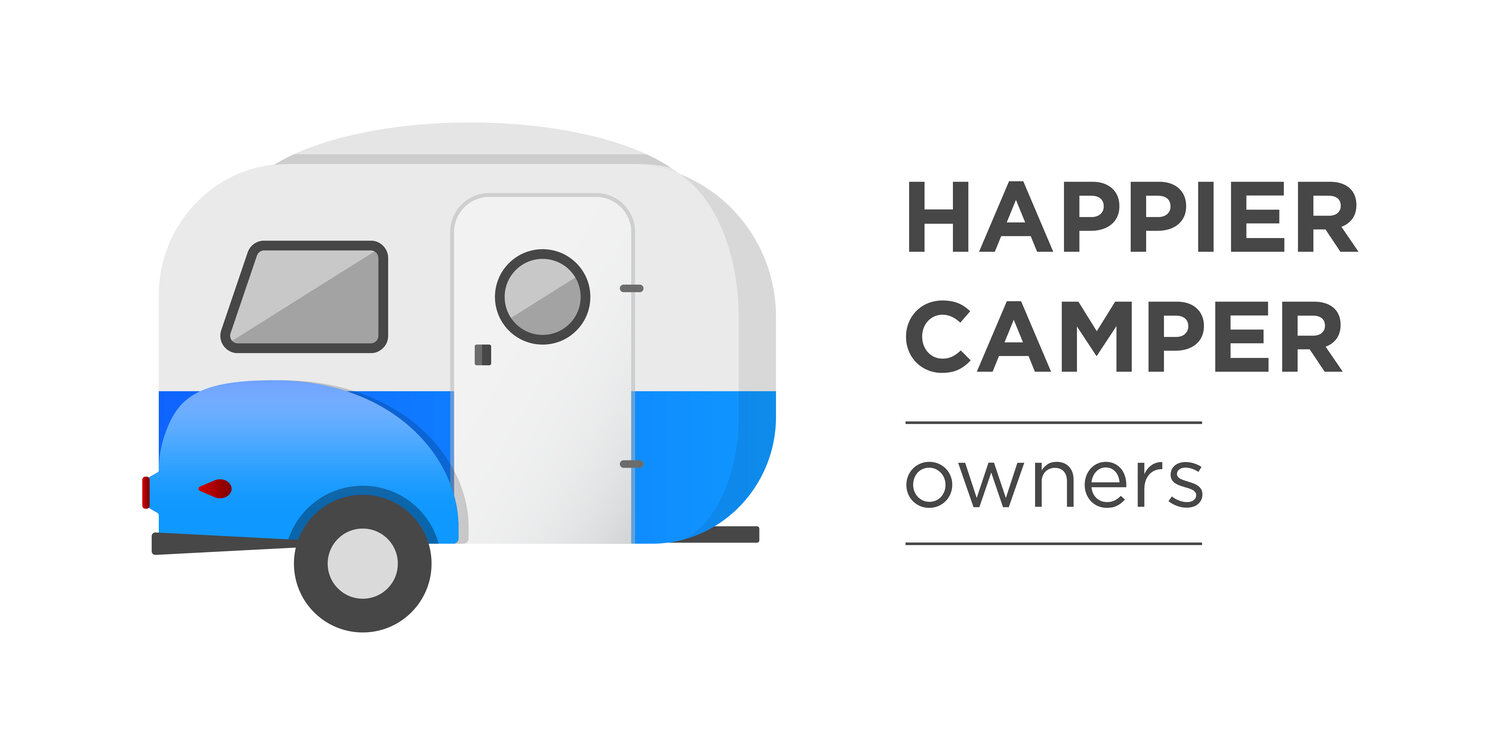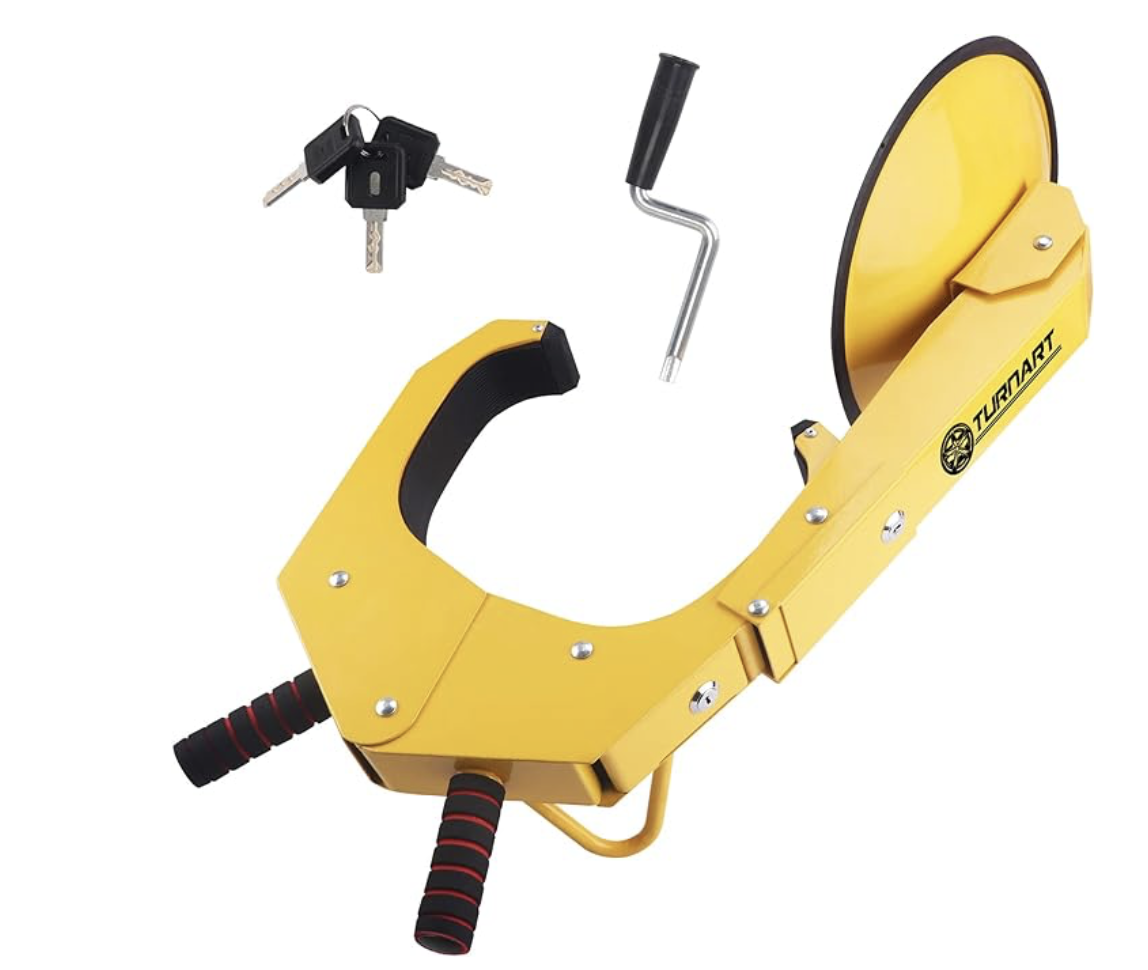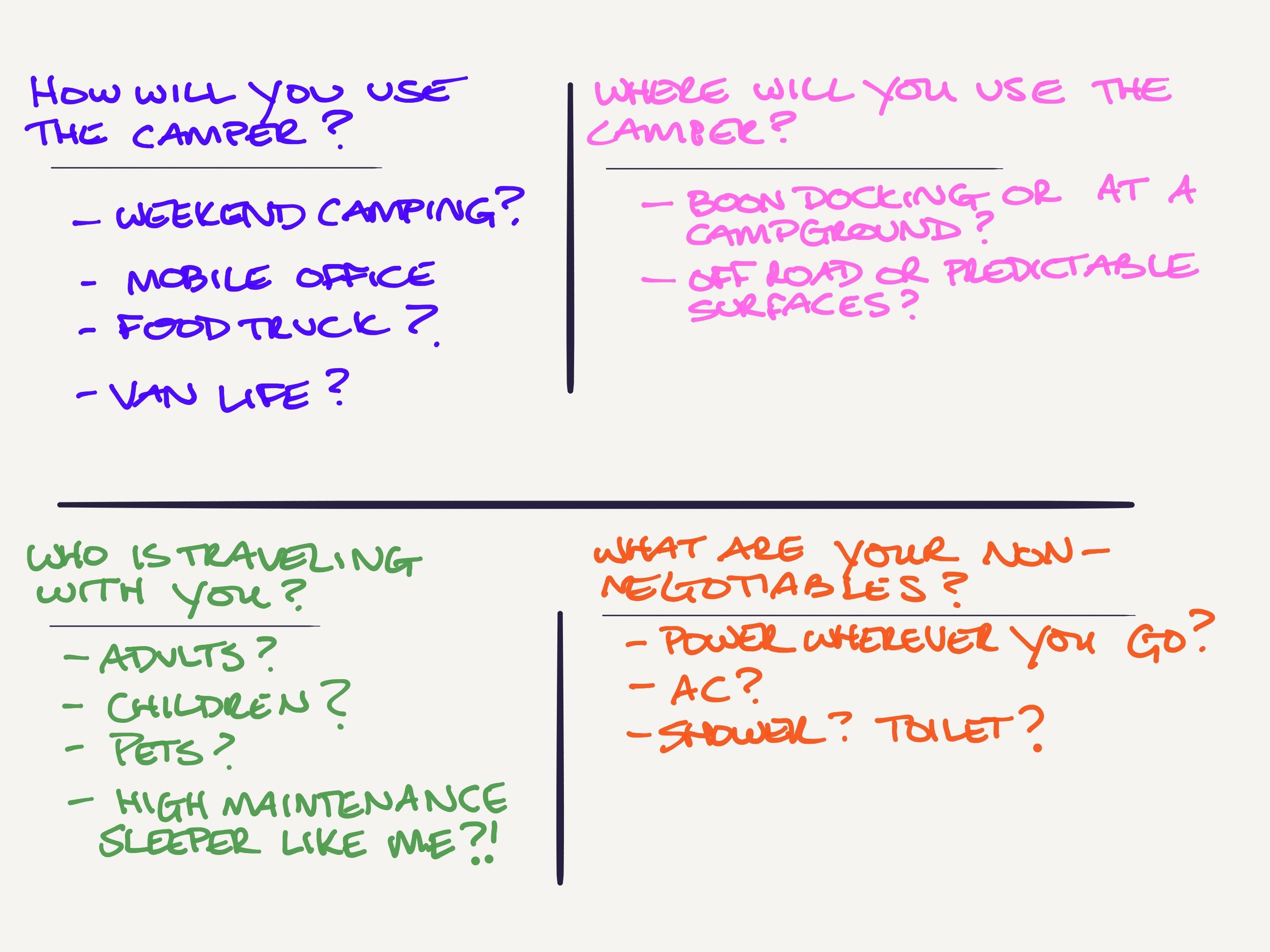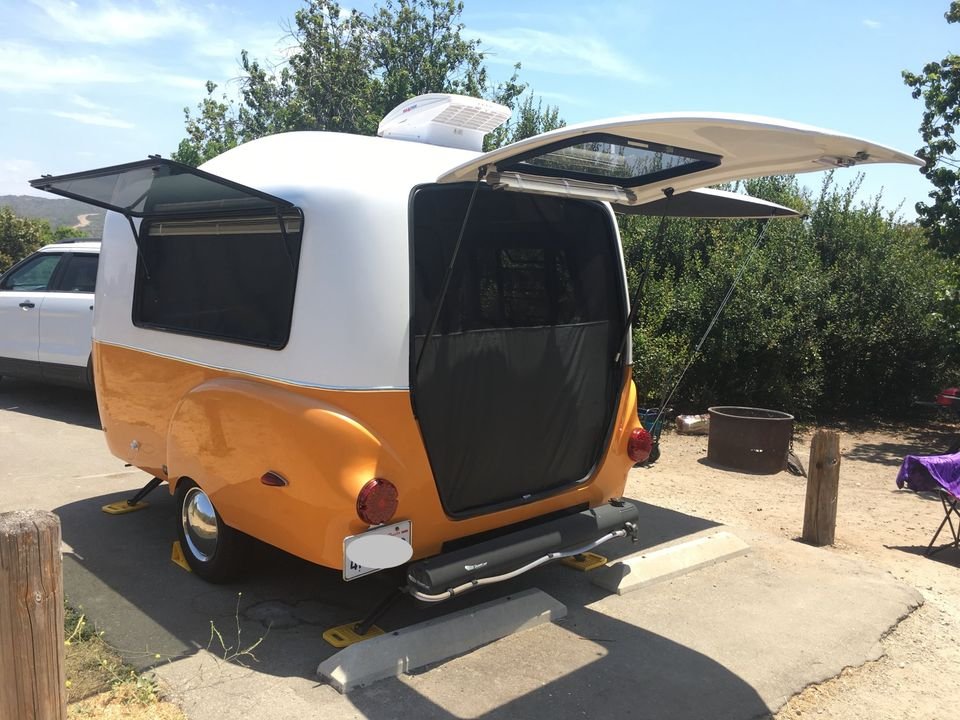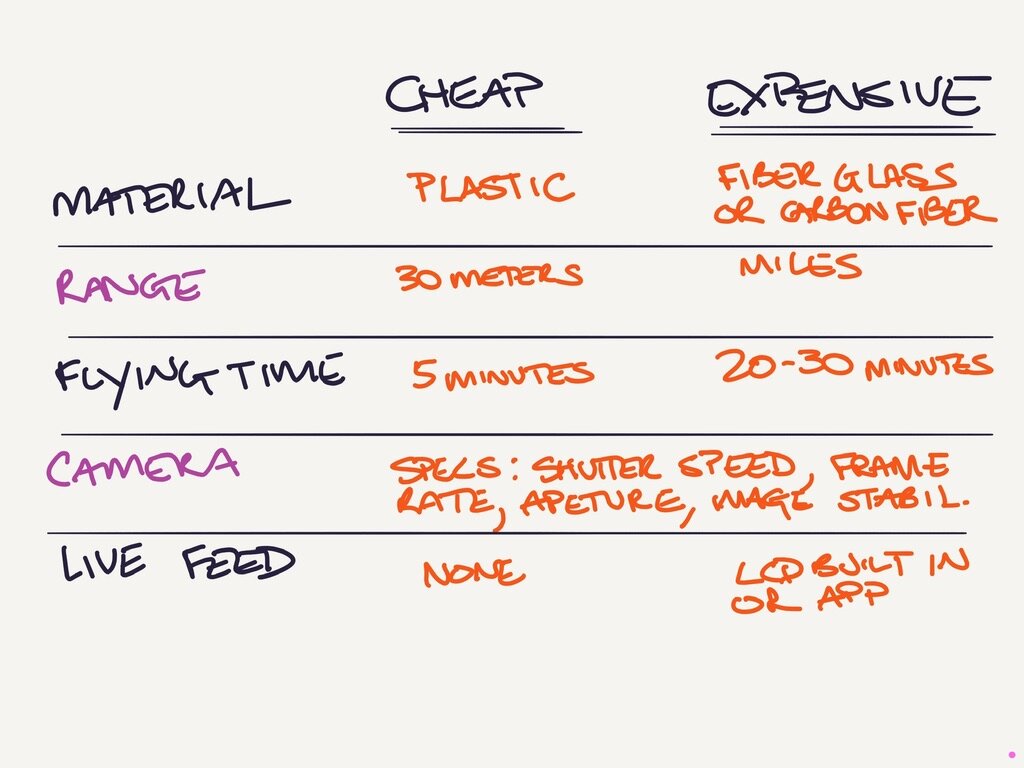The question of security and your camper is an important topic, particularly top of mind for women who are planning to solo camp. I’ve been asked everything from, how do I make sure no one steals my camper when I’m not on the campsite to, how likely is it that someone will unscrew the door hinges and remove it (the answer is never). I’m getting ready for a very big solo trip myself so I thought it was a good time to share how I’m traveling and staying secure. If you haven’t already read it, here is the original article I wrote on security back in the day. Read on for our latest updates.
How concerned should you be?
I thought I’d start by providing some statistics. I can’t confirm the data source from the website that I used and it is slightly dated, but let’s assume this is directionally accurate in 2024 when I’m writing this.
In 2018, RV thefts accounted for approximately .2% of all motor vehicle thefts. 40% were from a residential location and 34% overall were not recovered.
In 2020, 12% of RV thefts were motorhomes. 88% of stolen RVs were towable.
RV theft is most common between June and August.
On average, 208 towable RVs are stolen per month.
At this point in our camping journey, I can happily report we have never experienced a security issue. We’ve covered a lot of miles, been in campgrounds and boondocked, stored the camper on our drive and in a facility and so far, so good. I think that’s due to a combination of good planning, buying the right products (for us), being smart about our choices and probably luck. As with all things camping, there is no single answer that is right for everyone but there are some basic things you want to do whatever your risk profile is. I break down the topic into two categories: safety away from the campsite (your rig vs. your gear) and at the campsite. This article will focus on being away from the campsite.
Securing Your Camper
When we first bought our camper, this was one of our biggest concerns and people ask me about it often. We worried that someone would literally just tow our camper away and we’d come back to an empty spot.
How we think about it
If you are at a campground, we think your camper being outright stolen is unlikely. Even if you have a very private spot, people will have seen you and some sketchy dude showing up with a tractor trailer hauling a rig away just isn’t likely. In most cases, you have to have a tag to get into the camping area at a state or national park which limits access even more. I do think the risk goes up if you are boondocking, but again, unless someone has seen you in the area AND knows that you’ve left your rig for a while, it’s probably not likely. But that doesn’t mean you can’t take precautions because the unlikely can happen. And remember the data above - your biggest risk may be when your rig is on your drive or at a storage facility, so be consistent wherever it is parked.
Behaviors we engage in
While no set of security options is foolproof, there are some basics that you want to consider and it helps to think about what someone needs to do to steal your rig. They either need to tow it by hitching it to their vehicle or they need to load it on to a flat bed - the precautions you take are the same. Make it hard for them to do that. Make your security very visible so that they decide that it is too risky to get through your precautions because it will take time and they may get caught.
And if you won’t creep anyone out, talk to the people in the site next to you. Say hi, let them know you will be around but planning a day away for hiking. Without directly asking them, you’ve made them aware of your schedule and an unknown person showing up at your site could trigger them to ask questions.
Products we use
There are two products you really need to invest in: a wheel lock and a hitch lock. These are designed to make it hard to physically move your rig and thus harder to steal. We consider these to be absolute required investments. Below I’ve described what they are, why you want them and have provided links to my Amazon Affiliate account. If you want to buy, please consider using these links to help me defer the cost of maintaining this site.
The Wheel Lock
If it can’t roll
it’s harder to steal
The lock we use - the Brahma lock - looks like it is no longer available. Here’s a link to our video showing how it works. I think that’s still useful to check out because it will give you a feeling for what the difference is in having a really robust wheel lock vs. something simpler and less expensive. The pro for us in using the Brahma lock is that I think it’s virtually impossible to quickly break it off. The con is that it can be fiddly to get on the wheel.
There is another brand on the market which I would buy if I didn’t have the Brahma and that is the Turnart Wheel Lock Clamp. This looks like an improvement over the standard pincer lock and closer to what we have. Regardless of what type of wheel lock you get, just get one. Seeing that there is one on your rig means one more security measure to remove before it can be stolen and that’s just a smart deterrent.
The Hitch Lock
If you can’t hitch
it’s harder to steal
The hitch lock is an absolute must-own. It goes over the coupler, making it impossible for someone to attach your rig to their vehicle using their hitch. And while there are a couple of different styles out there, we use the Proven Industries hitch lock. This is designed for the 2 inch coupler we have on the Happier Camper rigs.
I get it - this is a very expensive lock but we think it’s worth it. It completely covers the coupler and your chains fit inside, making it impossible for someone to use them to tow your camper even without putting it on their hitch. That, plus the lock being on the underside (yes, it can be a pain to get to for us too) makes it hard to pick. If this is out of your price range, consider buying a lock for your coupler pin and a standard hitch lock.
Securing your gear
I would say - if it’s expensive, don’t leave it in your camper - but given how much money we all spend on fitting out our rigs just the way we like, that isn’t very realistic. A thief would be better off stealing our mattress toppers than my iPad if they could sell them! That being said, there are some things you can do to limit your risk and hold on to your stuff.
How we think about it
Beach camping in Texas in our Happier Camper HCT
We try not to get too stressed about stuff being stolen out of our camper. The reality is, it’s pretty easy to break into a camper. Someone could smash a window and camper locks aren’t unique (check out this article and try not to panic). A lot of our camping is at state and national campgrounds - like this amazing site we had at a state park on the beach in Texas - where people just want to enjoy the great outdoors and aren’t there to commit a crime.
Behaviors we engage in
It’s not a long list but here goes…
If it’s electronics - laptops, cameras, drones, Starlink, portable AC units - put it in your vehicle and take it with you
Put movable things in the camper before you go and lock up. If it’s super heavy like a generator, chain it to the rig or a tree
If you can’t live without it, don’t bring it. I have some beaded Native American jewelry that I treasure and while I’d like to have it with me on long haul trips, I leave it at home. Losing it or having it stolen would break my heart because they can’t be replaced.
I know, there isn’t a lot here. And I don’t have any product recommendations either. I do want to revisit with Happier Camper if they have recommendations for replacement locks and whether that would void the warranty on the rig, but that’s an article for another time. If you have any security hacks that I haven’t covered, please drop in the comments below. Happy camping!
